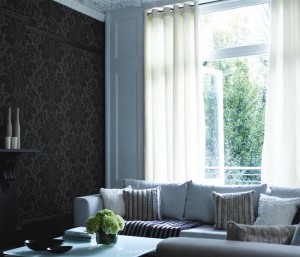Linen – Linen Curtains?
January 28th, 2009 by admin Linen is a very common fabric for curtains to be manufactured from, but not many people understand it’s origins or how it is manufactued.
Linen is a very common fabric for curtains to be manufactured from, but not many people understand it’s origins or how it is manufactued.
Linen has been around for centuries, and it can be traced as far back into history. Not only was it used to make fabrics but it was also used as a form of currency. Linen was seen as an attribute of wealth and purity so it was used in the burial process in ancient Egypt. Linen was also used often by artists to create works of art like the Mona Lisa. Today, linen is still viewed as a higher quality cloth and is usually made in small lots. As well as for curtains we use linen for clothing, home furnishings, decorations and industrial products.Linen is actually made from vegetable fibers. Fibers are slender elongated substances capable of being spun into yarn. Fibers can come from one of four different origins, animals, vegetables, minerals and synthetic. Linen is the strongest of the vegetable fibers. Made from the flax plant, linen is two to three times stronger than cotton. Flax fibers can come in two different varieties, shorter tow fibers and longer tow fibers, which is why linen can be made in coarse and finer fabrics.The fabrics natural colors tend to run between cream, tan and gray. Linen is highly absorbent and very sturdy. It has the ability to take in and lose water quickly and is one of a handful of fabrics that are stronger wet than dry and it gets softer the more you wash it.
Linen customarily comes in bulk commonly called a Lea. A lea’s average size is 300 yard per pound. It can be expensive because of the time involved and the difficult manufacturing procedures. The method for producing linen is an extensive process. Flax is hand harvested. This process requires up rooting the entire plant. Once the seeds are removed through a process called winnowing, the next step is retting. Retting is to soak the flax in water to remove the fibers from the woody tissue by partially rotting it. After retting there’s scutching, which takes place from August to December. Scutching also separated the fibers from the woody part but by beating it. Then the short fibers are combed away leaving the longer, softer fibers. Upon completion of the separation process the substance is spun into yarn and then knit or woven into linen. When the fabric is made then it can be bleached, dyed or printed on. The finished products are the beautiful table cloths, bedspread and draperies we see today.





 0
0